 Nearly 1.3 million women transition into menopause every year, yet talking about it, especially with partners or family, can feel isolating or even awkward. You are not alone if you’ve struggled to explain your symptoms or have asked for support. Knowing how to start the conversation, express your needs, and when to speak with menopause doctors can make all the difference.
Nearly 1.3 million women transition into menopause every year, yet talking about it, especially with partners or family, can feel isolating or even awkward. You are not alone if you’ve struggled to explain your symptoms or have asked for support. Knowing how to start the conversation, express your needs, and when to speak with menopause doctors can make all the difference.
Learn the best approach to talking with your partner or family about menopause comfortably.
Understand Your Own Experience First
Before opening up to others, take time to understand what you’re going through. Menopause affects each woman differently, emotionally, mentally, and physically. Think deeply about your symptoms and how they affect your daily life. Gaining a clear perspective of your experience can help you feel more grounded and make it easier to explain it to those around you.
Learn Together With Your Loved Ones
Despite the uncertainty you may feel about this new phase in your life, menopause isn’t just your transition. It can affect those closest to you. Invite your partner or family to learn alongside you to help build empathy and reduce misunderstandings. Share trusted resources, watch a video together, or discuss your discoveries. Knowledge can nurture a connection and reduce distance.
Choose the Right Time to Start a Conversation
Timing matters when starting a sensitive conversation. Choose a quiet, low-stress moment when you and your partner or family feel relaxed and open. A gentle approach, such as saying “There’s something I want to share about how I’ve been feeling,” can set the tone for an honest, supportive exchange.
Explain Common Menopause Symptoms Simply
Menopause can bring a wide range of symptoms, such as hot flashes, fatigue, mood swings, brain fog, and more. Use clear, non-medical language to describe what you’re feeling. Framing it as a natural transition, rather than a problem to be fixed, can help your loved ones better understand your experience and respond with compassion.
Share What You Need From Them Right Now
Your loved ones may want to support you, but may not know how. Be honest about what you need, whether patience during mood changes, extra help at home, or being heard without judgment.
Avoid jumping to anger and use phrases such as, “It would really help me if…” or “When I feel overwhelmed, I need…” This type of clarity can help build trust and teamwork. Let your partner or family members know their support makes a difference, even in small, everyday ways.
Promote Empathy by Explaining Hormonal Changes
Many don’t realize how significantly hormone changes affect mood, sleep, and energy levels. Explain that these shifts happen gradually and can feel unpredictable. Reassure them that it’s not about blame, but rather biology. When your loved ones better understand the changes you’re going through, it can help reduce tension and promote empathy.
Talk About Intimacy and Libido Shifts Clearly
Changes in libido or desire are not uncommon during menopause, but they can be hard to talk about. Let your partner know it’s not about rejection, but your shifting needs. Share openly and invite them to do the same. Emotional closeness, touch, and patience can help you stay connected through this transition.
Work as a Team to Problem-Solve Solutions
Menopause can create daily challenges, but you and your loved ones can tackle them as a team. Discuss simple adjustments, such as cooling strategies for hot flashes, improving sleeping routines, or sharing household tasks.
Collaborating on these changes shows that you’re working together and helps reduce stress. When everyone pitches in, it builds a supportive environment where you can handle menopause changes more easily.
Maintain Ongoing Check-Ins and Communication
Menopause is not a one-time event but rather an ongoing experience. Regularly check in with your partner and family to tell them how you’re feeling and what you may need. Stay open, patient, and use humor to help reduce tension and strengthen your connection. These ongoing conversations can help everyone adjust, even as your transition evolves.
Involve Health Providers When Needed
 Sometimes, professional support can make a significant difference in how you get through menopause. If symptoms feel overwhelming or disrupt your daily life, consider reaching out to a menopause doctor who specializes in managing these changes.
Sometimes, professional support can make a significant difference in how you get through menopause. If symptoms feel overwhelming or disrupt your daily life, consider reaching out to a menopause doctor who specializes in managing these changes.
Invite your partner or family to join appointments to create a team approach to your health. Don’t think of asking for help as a sign of weakness, but rather strength and self-care.
Contact the Team at Raleigh Gynecology & Wellness
Opening up about menopause can feel challenging, but the outcome can be positive for all involved. Being honest about your needs lets your loved ones stand by you through this change. When you’re ready, consider consulting with a menopause doctor for professional guidance to make this transition smoother and more manageable.
Reach out to Raleigh Gynecology & Wellness today to schedule an appointment.

 Weight gain after
Weight gain after  Weight gain and body changes after menopause can damage your self-esteem. You may feel discouraged, especially when your efforts don’t yield the same results as before. But your body is adapting, and this process takes time and patience.
Weight gain and body changes after menopause can damage your self-esteem. You may feel discouraged, especially when your efforts don’t yield the same results as before. But your body is adapting, and this process takes time and patience. Many
Many  Timing: Perimenopause starts before menopause and lasts an average of
Timing: Perimenopause starts before menopause and lasts an average of  Although some perimenopause and menopause symptoms are to be expected, some changes signal the need for medical intervention.
Although some perimenopause and menopause symptoms are to be expected, some changes signal the need for medical intervention.



 According to the
According to the  These professionals address everything from hot flashes and sleep issues to mood changes and related symptoms. A menopause-focused visit often includes a full review of your symptoms, lifestyle, and risk factors, such as heart health and bone density. With regular follow-ups, these specialists offer personalized care plans designed to help women feel their best throughout the menopausal transition and beyond.
These professionals address everything from hot flashes and sleep issues to mood changes and related symptoms. A menopause-focused visit often includes a full review of your symptoms, lifestyle, and risk factors, such as heart health and bone density. With regular follow-ups, these specialists offer personalized care plans designed to help women feel their best throughout the menopausal transition and beyond.